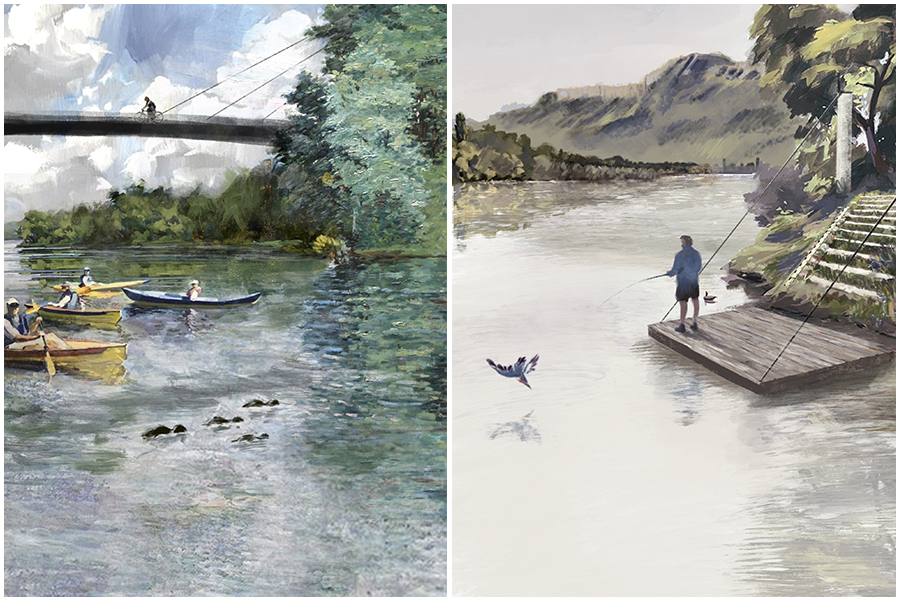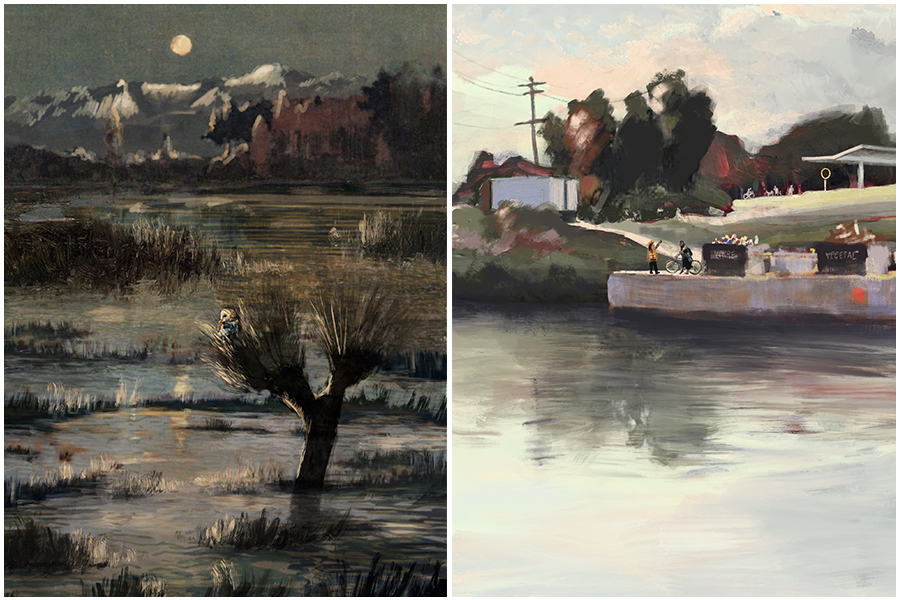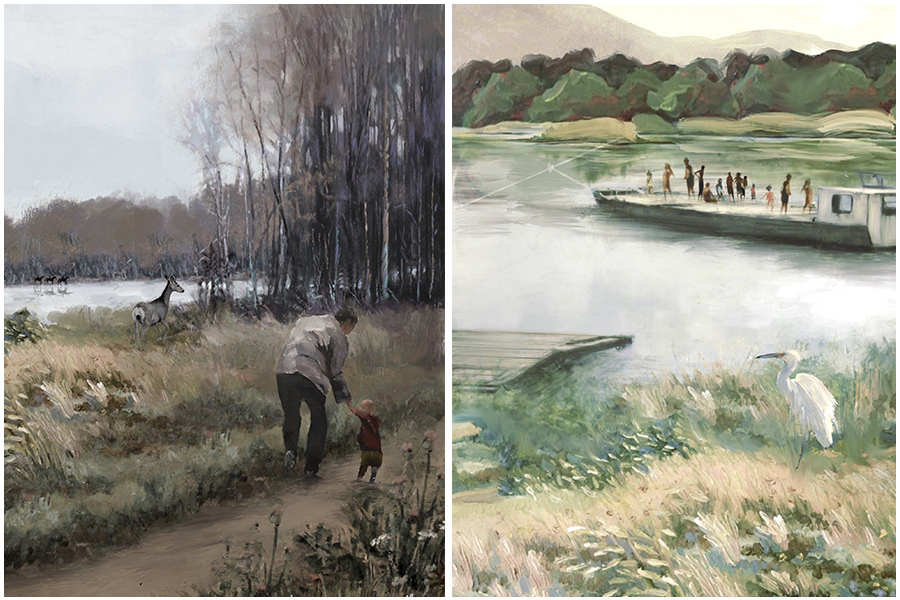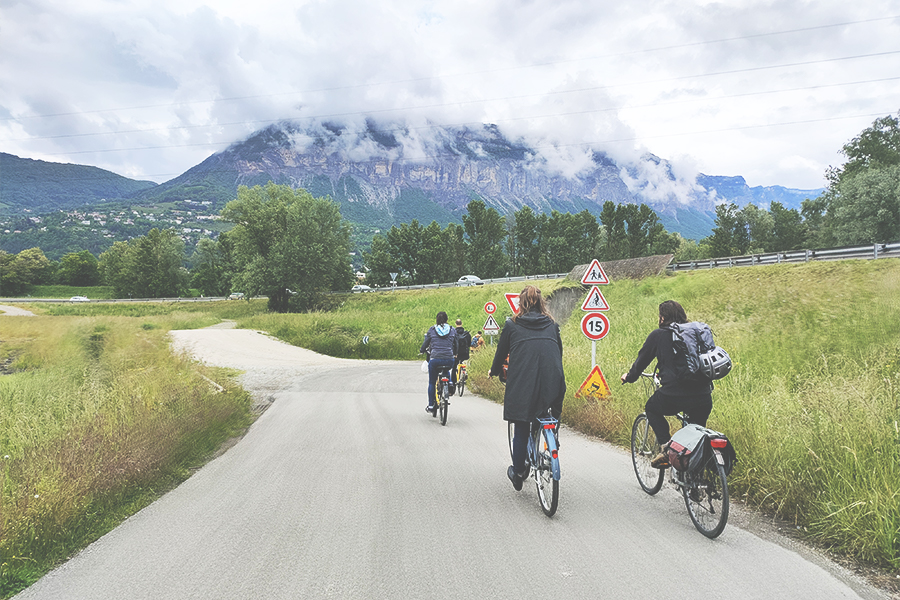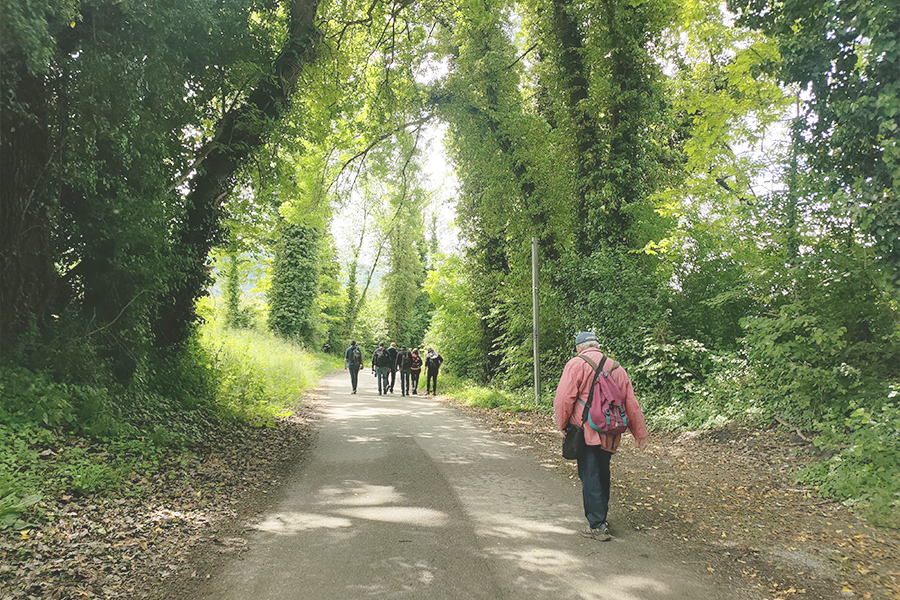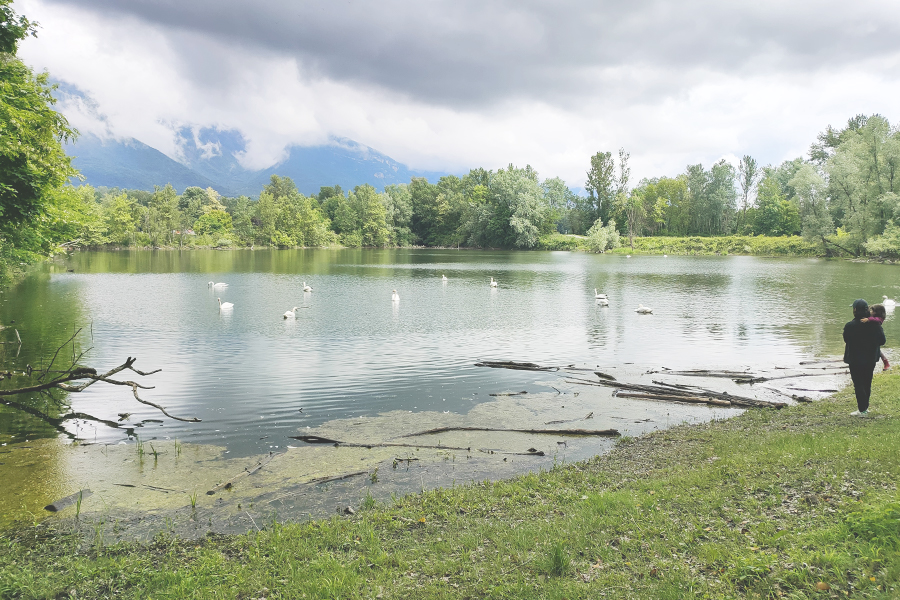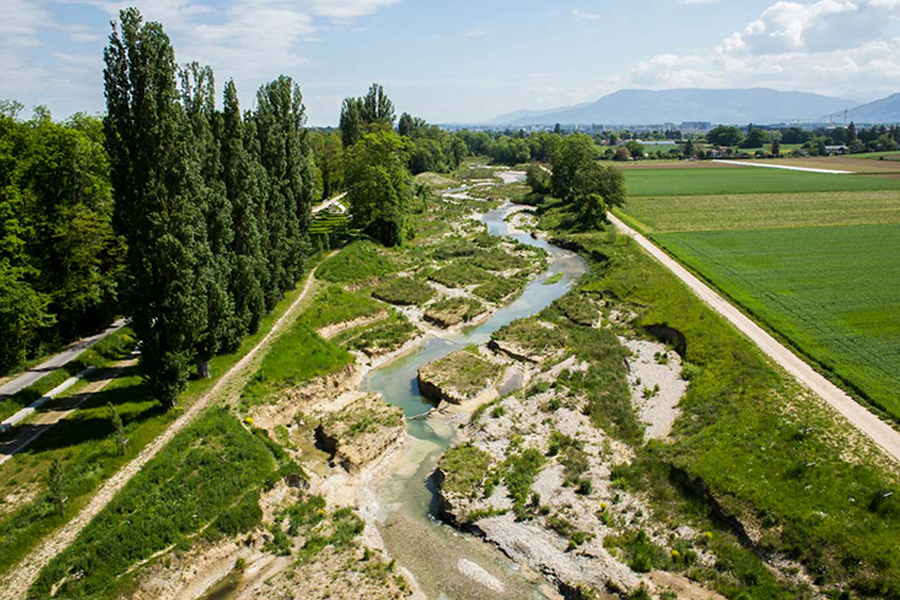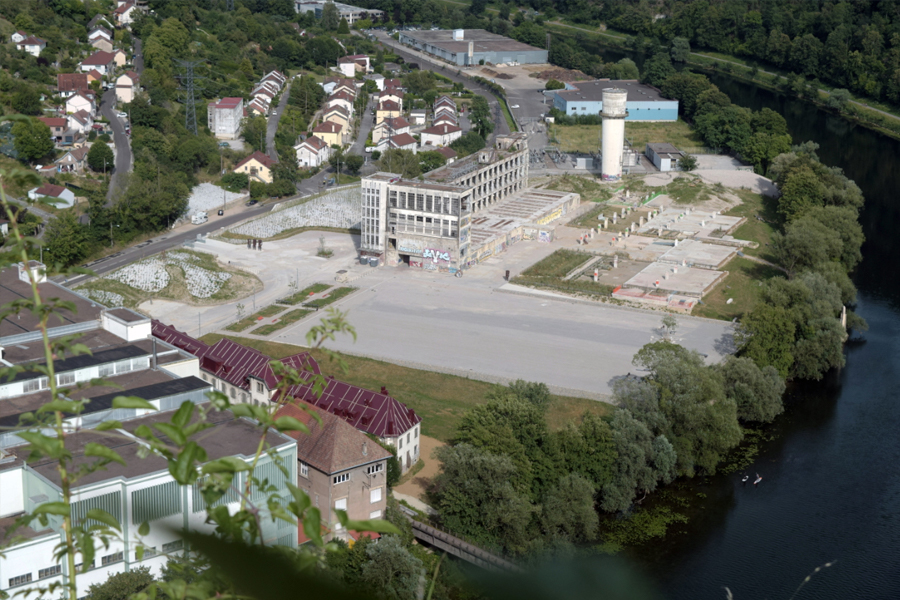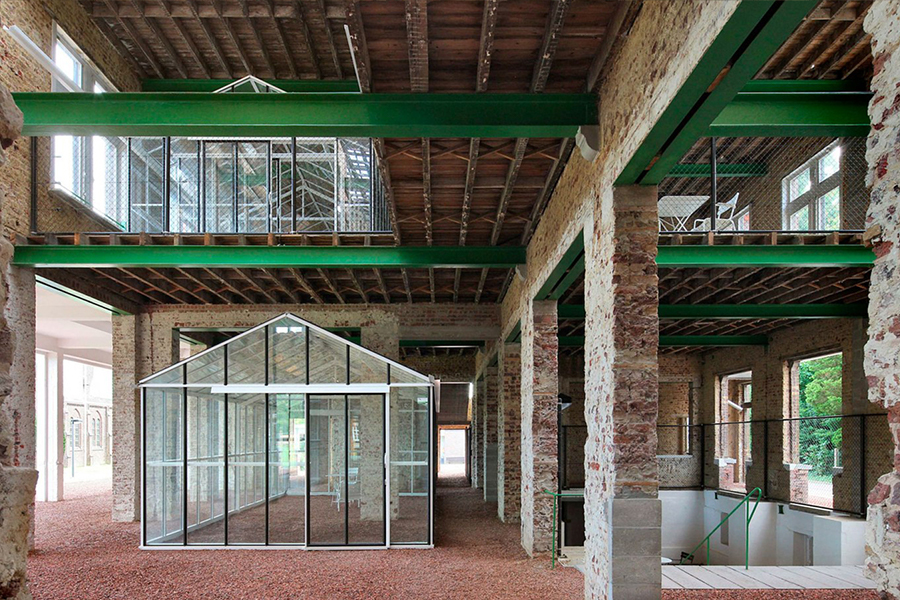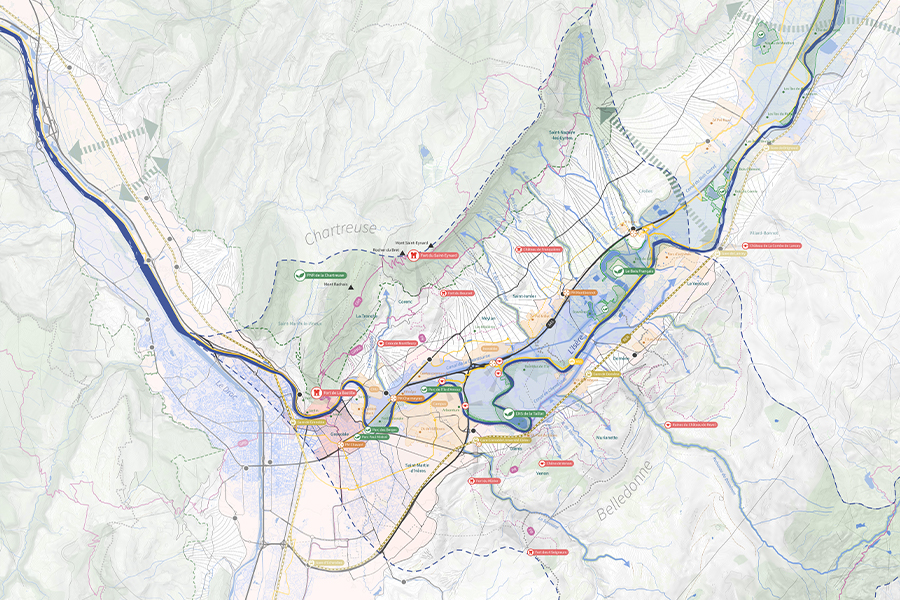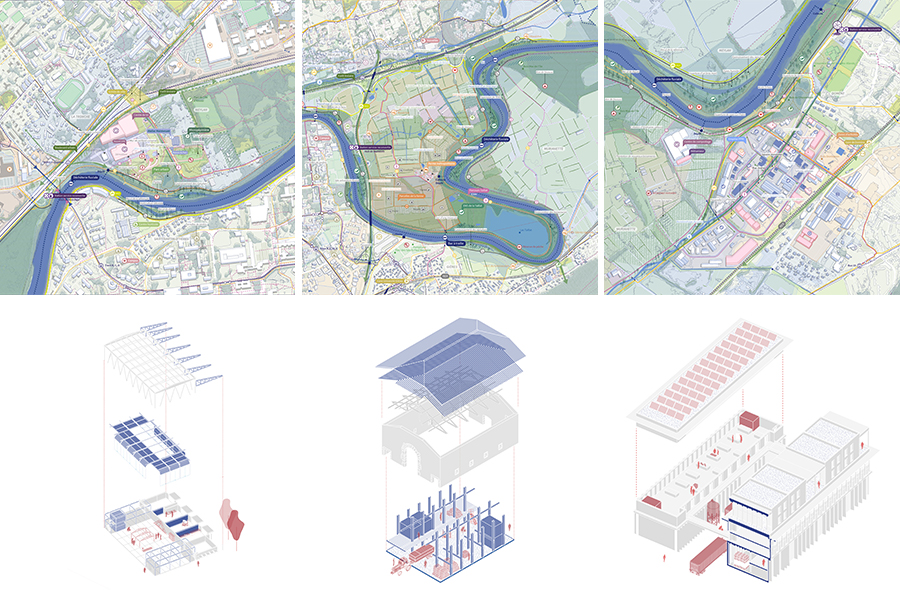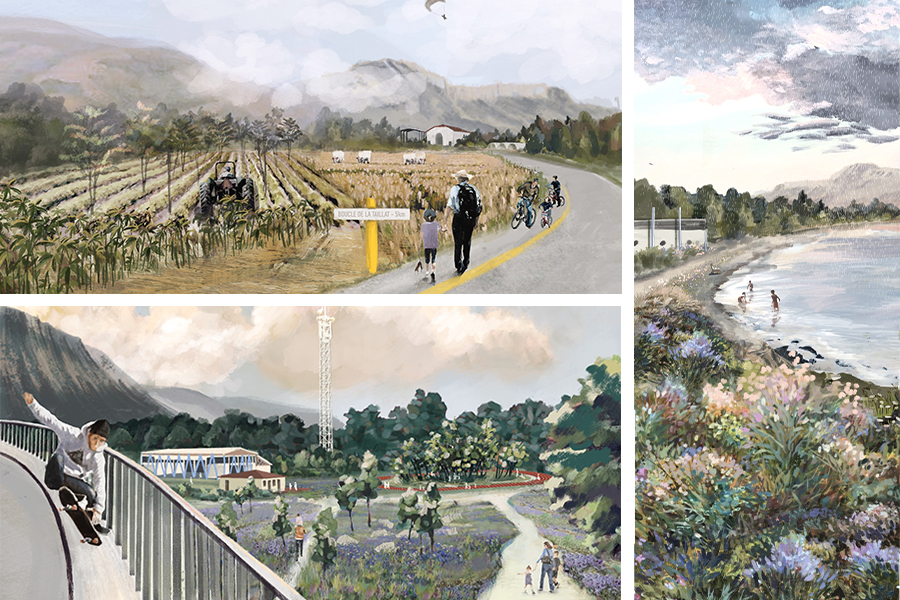(s)lowland
Grenoble (FR) - Special Mention

TEAM PORTRAIT
VIDEO (by the team)
INTERVIEW
Click on the images to enlarge
1. How do you define the main issue of your project in relation with the theme “Living Cities Imagining architecture taking care of the milieus”? And in which way do you think your project can contribute to an ecological and/or social evolution?
"(s)lowland" project seeks to revitalise the Grésivaudan Valley by reconciling nature and urbanism to address ecological and social challenges. Faced with past urbanisation, it reimagines (re)development by integrating sustainable solutions. By renaturing the alluvial plain, it restores the balance between human activities and ecosystem preservation, providing a response to the theme "Living Cities: Imagining architecture that cares for the environment." Renaturation measures, such as dike setbacks, water reintroduction, and diversification of environments, contribute to necessary ecological evolution. Socially, the project promotes community participation, the slow philosophy, and the creation of an artisanal SCIC, strengthening social bonds. "(s)lowland" aspires to create a harmonious "Grand Park of the Alluvial Plain," reconciling human activities, environmental preservation, and social well-being with a progressive, iterative, and sustainable approach.
2. How did the issues of your design and the questions raised by the site mutation meet?
Water is central to the site's geomorphological essence, development issues, and current identity, likely serving as the catalyst for its transformation. Our focus is on repairing the connection between the river and its environment—ecologically by placing it at the heart of its ecosystem and perceptually through a sensitive, seasonal approach to the landscape.
PROJECT:



The challenges of the Boucles de l'Isère site align with common themes in suburban plain development: the role of agriculture, flood risks, crossings, etc. Its atypical nature lies in the ongoing search for an identity and purpose, embodying a project of social and ecological policy.
SITE:



Our project involves a long-term animation method that questions the site's identity and purpose with various authorities, economic actors, and residents. This nonlinear process includes encounters, events, experimentation, and reception. It disseminates ideas and knowledge, mobilizes and questions stakeholders, allows experimentation and testing, and focuses on (re)establishing a place for everyone.
REFERENCES:



Our team is primarily formed based on affinity. We aimed for a triple approach—landscape, architecture, and urbanism—given the site's broad and intertwined issues. We also collaborated with an artist to represent our site perception through "impressionistic" paintings, aligning with our sensitive approach rather than using abstract collages or photorealistic perspectives.
6. How could this prize help you in your professional career?
Atelier AUMMA aims to undertake urban project management missions, and the E17 competition could serve as an initial reference to build a candidacy dossier for a public tender.
TEAM IDENTITY
Legal status: SARL
Team name: Atelier AUMMA
Average age of the associates: 29 years old
Has your team, together or separately, already conceived or implemented some projects and/or won any competition? if so, which ones?
Thomas and Théo run together the architecture and urbanism office AUMMA which lead a dozen of projects private and public. Alice is winner of EU16 on Grenoble Site in the project team LABO RABO.
WORKS:



